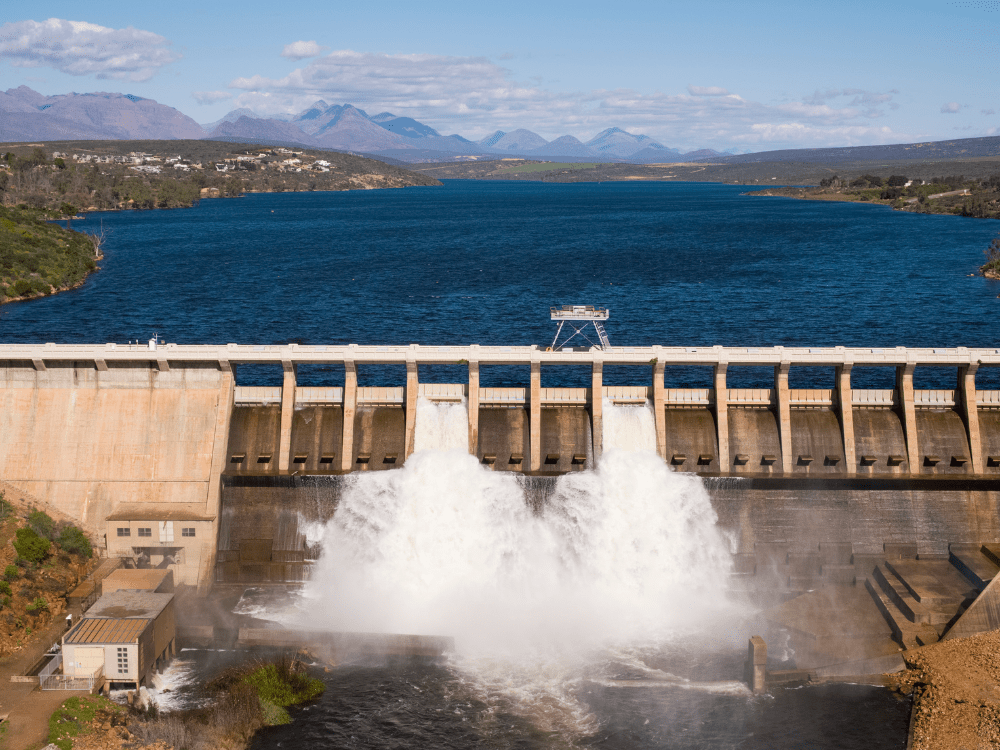How it works.
Humans have harnessed the power of water to drive machines since the dawn of time, with the ancient Greeks first using water-driven millstones to grind wheat into flour. Hydropower was first used to generate electricity in the late 1880s and now supplies over 16% of the world’s electricity.
There are three types of hydroelectric power stations: conventional, pump storage and run of river. Each generates electricity by passing water from a dam (conventional) or river (run of river) through turbine blades to drive a generator to convert the motion into electricity. In the case of pumped storage hydro, water is pumped from a lower elevation dam to a higher one, and this water is released to drive the generator when electricity is needed.
Giant batteries.
Typically, pump storage plants will move water between a lower and higher dam during the middle of the day when energy from renewable sources like wind and solar is plentiful and demand is low. The water in the higher dam essentially becomes stored energy, much like a giant battery, ready to be released quickly and for long durations to generate energy when it is needed most.
Like battery storage, pumped hydro will increasingly be used to back up renewable energy sources, stepping in when the sun isn’t shining or the wind’s not blowing.

Australia’s hydro energy resources.
Australia, the driest inhabited continent, has limited surface water but has effectively utilised its hydroenergy resources. Over 100 hydroelectric power stations, mainly in New South Wales and Tasmania, provide about 7800 MW capacity. The largest, the Snowy Mountains Hydro-electric Scheme, accounts for half of the country’s hydroelectricity. It features an extensive network of dams, tunnels, and power stations, redirecting water for both irrigation and power.
Tasmania’s significant hydro scheme, with 50 dams and 29 power stations, contributes substantially to the National Electricity Market, linked to the mainland by the Basslink undersea interconnector. Other regions like Victoria, Queensland, Western Australia, and South Australia also participate in hydroelectric generation.









